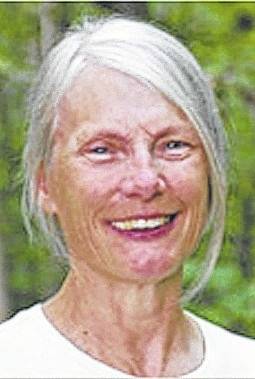
The big yellow daffodils are a welcome sight as one pulls into the parking lot at Stratford Ecological Center on Liberty Road, especially since we had no mild April showers to bring on the other spring flowers. There has been torrential rain, snow and high winds, and well below normal temperatures. Fortunately, there are plenty of places out of the weather to take our young visitors to learn how their food originates, and on route puddles provide a wonderful playground. One child shared he thought being at Stratford was even better than recess!
It is not the kind of weather for young lambs to move into the fields, or to see a cow calving far from the barn. Nor do we want animals tearing up the ground in the wet fields just as the new grass is growing. Consequently, the animals have been restricted to the barn or barn yard. Hay supplies are rapidly dwindling, but enough remains in the loft to carry us through the next few weeks. We may soon need to sacrifice the strip of land between the barn yard and the woods for grazing and reseed afterward.
Lambs are plentiful, but no sign of goat kids yet. The four nannies were bred late in the fall so this is to be expected. It makes life easier if they don’t give birth together, as it allows us to rotate the new mothers between the birthing pens. Goats kept in a barn are subject to foot rot if their hoofs sink for too long into the wetter layer beneath the top straw, and our nannies have required more attention this spring.
The cattle bred successfully last summer, and we have three calves, with Jersey cow, Pumpkin, and a beef heifer still to calf. Sassy, another Jersey, was the first and delivered a heifer on March 15, named Sojo after Sojourner Truth, a women’s rights activist. Socks, the last calf from our matriarch Sugar, produced a red bull calf with “socks” on April 8. Beef cow Sweet Annie, a daughter of Sweet Bessie, produced a heifer. The myth that cows cannot conceive while still nursing was dispelled this year with Sassy having calved and Pumpkin due, even though their calves were not weaned when they ran with the bull.
Farmer Jeff used the big tractor to frost seed red clover and Timothy grass between the spelt planted last October in parts of fields 1, 2 and 3. He was advised to plant them in early winter with the hope of better germination when temperatures rose, but wet conditions prevented him getting into the field. To continue with the farm’s rotation plan, he needed to plant the clover, a legume which produces nitrogen to feed the grass, alongside the spelt. After the spelt is harvested in July, the clover/grass mix remains for grazing or hay through next year, providing a nutritious seed bed for the following spring corn planting. Due to the uncertainty of weather, Farmer Jeff plans to go back to his old method and plant all three together in the future.
The tree swallows are building their nests in the boxes in the prairie. It is a great time to throw chicken feathers in the air and watch the swallows swoop down and carry them to their nests. Thanks to an Eagle Scout project, there is a fourth purple martin rig next to the pond and plenty of activity. The tall posts with white artificial gourds hanging on them are easy to spot. Bluebirds have been a constant visitor to backyard suet feeders this winter, but like the chimney swifts, are not yet readily visible at Stratford.
The meandering stream running through the preserve varies in depth according to the amount of runoff feeding it. It always comes as a surprise to find the stone-filled bottom revealed only a couple of days after a heavy rain. It was running quite full a few weeks ago when farm and nature guide Kaye took her pre-school group, accompanied by plenty of parents, to check it out.
This spring, Kaye invested in a pair of rubber boots that allow her to keep her shoes on for extra warmth. She admitted walking in her huge boots took some adjustment. Whether due to the boots or the soft earth beside the stream, Kaye leaned down to eye level with the children and suddenly found herself sitting in the stream with cold water soaking her corduroy trousers and filling her new boots! The children reacted as if it was normal, and the parents reacted with sympathy and helped Kaye onto the bank. It was the beginning of a two-hour tour, and Kaye gamely carried on. She stayed for lunch, and when she rose, she still left a puddle on the chair. I am glad to share she suffered no ill effects.
This weekend, in celebration of Earth Day, 300 slim, 2.5-feet-tall trees are to be planted at Stratford. The tulip poplars, arrowhead viburnums, and Persimmons will be on the hillside above the pond between the catalpa trees. Additionally, redbud and dogwoods will be planted to replace the invasive honeysuckle removed from the tree lines.
Next Saturday, April 28, from noon to 4 p.m., the Sun and Moon Poetry Festival will be held for the second year at Stratford. Readings will take place on the trails in the woods, where the numerous wildflowers will surely have raised their heads. By the morning of May 5, during the Wildflower Walk for Adults, they should be perfect. The Herb Group is planning their Edible Plant Walk ID and lunch a little later this year on May 19 to ensure more edibles are visible and available for lunch. Woodcarving classes will run from May 1-29.
Details of all our programs may be found on our website. We welcome you to come out and discover spring at Stratford.


